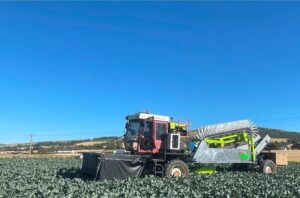
california ranch.jpg
Livestock gates are an important accessory around the farm; they help the farmer control and protect livestock.
While all gates have the same objective, not all of them are best suited for predator obstruction, animal containment, and forage control. Some are an outright no-no and others are deceptively good but not ideal. Here’s how to separate the wheat from the chaff:
Size
The size of the livestock gate depends on animal traffic and the kind of animal to be controlled. Bigger livestock will require similarly sized gates to alleviate self-inflicted injuries, especially when they crowd for entrance or exit.
For smaller varieties like goats, a small gate would be ideal, although you also have to consider tools, vehicles, or equipment that would need to pass through for operational, treatment, and other purposes.
Also, the general rule of thumb dictates that the more the animals, the bigger the gate. If you think a specific size will be ideal, it’s customary to factor in some allowance above that measurement just in case.
Automation
Will it be a manual gate or an automatic one? The latter is often the go-to as it’s better at containing inquisitive animals not afraid to try their luck while affording great convenience to the farmer. An automatic gate doesn’t imply an electrical model as there are spring-load alternatives that work just as well.
You could also try out a bump gate, which includes sturdy stoppers that ensure passage for human traffic only.
Material
A good livestock gate needs to be strong, especially if you’re talking about holding large and powerful livestock such as bulls and horses. Stainless steel is often the go-to for its ability to withstand punishment (like animals scratching against such surfaces, which is somewhat of a hobby for them) and rust, consequently offering excellent ROI.
Spacing
Did you know that if an opening is big enough to fit a goat’s head, it’ll have no problem shimmying the rest of its body through? These flexible creatures mean that a wire-meshed livestock gate becomes a vital concern to ensure they don’t sneak out. Alternatively, such gates come in handy in the opposite scenario of slippery predators.
Temporary or permanent?
If you are looking at livestock gates for rotational grazing, you might find temporary gates an appealing solution for proper pasture management.
These types are usually made from lighter materials and are consequently weaker than permanent varieties and, therefore, need to be paired with electricity to deter animals. A permanent livestock gate becomes plausible for a stationary entrance or exit.
Budget
Quality goes go hand in hand with the cost of a livestock gate some of the time, but more expensive doesn’t always mean better.
For instance, if you aren’t too keen on spending a lot of money on a gate and would like an automatic one, a bump livestock gate is a cheaper answer to solar-powered and electric makes. In most cases, you can even make do with wood alternatives instead of stainless steel, which costs drastically more.
Picking out a good livestock gate is a task that should be quite easy once you work out the right dimensions, material, and functionality. If you are still undecided on the kind of livestock gate that is in line with your specific needs, be sure to reach out to us so that we can help you identify one perfect for your farm and the prevailing circumstances.
Source link
2019-12-12 12:02:00
Originally posted 2024-06-20 07:05:58.
Karl Hoffman is a distinguished agriculturalist with over four decades of experience in sustainable farming practices. He holds a Ph.D. in Agronomy from Cornell University and has made significant contributions as a professor at Iowa State University. Hoffman’s groundbreaking research on integrated pest management and soil health has revolutionized modern agriculture. As a respected farm journalist, his column “Field Notes with Karl Hoffman” and his blog “The Modern Farmer” provide insightful, practical advice to a global audience. Hoffman’s work with the USDA and the United Nations FAO has enhanced food security worldwide. His awards include the USDA’s Distinguished Service Award and the World Food Prize, reflecting his profound impact on agriculture and sustainability.


